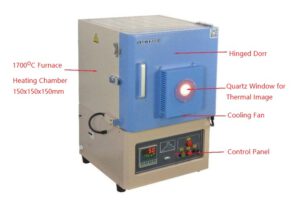If you’re having trouble keeping your furnace warm, consider calling Furnace Repair. A technician will check all the components of the furnace to ensure everything is working properly and nothing has become damaged or malfunctioning. You’ll be much less likely to run into furnace issues if you have an annual checkup. When you hire an HVAC technician, you can reduce the risk of major problems by saving money on repairs. A professional heating technician will also be able to provide the proper knowledge to diagnose the problem.

A furnace is a heating device that burns fuel to create heat. The flames from the fuel burn in the furnace heat a metal heat exchanger, which transfers the heat from the burning fuel to the air. The air is then forced through ductwork downstream of the furnace and discharged outside the building through the flue pipe. An older model of a furnace, known as an “atmospheric furnace,” wastes 30% of its fuel energy in keeping the exhaust hot enough to rise through a chimney.
Before attempting to troubleshoot the furnace’s problems, turn off the power. If you don’t have a separate power entrance for your furnace, you can find it near the main entrance panel. Some furnaces also have a reset button or a separate power entrance. If you cannot find the main entrance panel, try pressing the reset button. If this doesn’t fix the problem, you may have to contact your furnace manufacturer for further help.
If you’ve recently bought a furnace, consider getting a tune-up. While you can schedule a tune-up at any time, it’s best to do it before the cold weather arrives. Your furnace should be ready for the winter months ahead by completing a thorough inspection. It can save you hundreds of dollars on energy bills in the long run. In addition, it will help ensure the safety of your family and keep your home comfortable throughout the season.
A furnace’s efficiency depends on how it’s powered. A furnace can run on electricity or natural gas. Different designs use different fuels. You can choose an electric furnace, a natural gas furnace, or a propane furnace. You can also choose between electric or induction furnaces. The choice depends on your needs. And remember, there are a few things to keep in mind when choosing a furnace. Keep reading for more information!
If you’ve ever wondered what a furnace’s pilot light does, you can watch this video to understand how it works. This part of the furnace’s system is located on the high limit switch. It works by checking for flame every time the furnace starts. If the pilot light is out, the safety features shut down the furnace. The flame sensor rod can build up over time due to soot and debris. The accumulated byproducts will hamper its function.
The exhaust flue of a furnace is the path that hot gases follow away from the heat exchanger. This exhaust is carried up a metal pipe. Older furnaces typically used vertical flues to allow hot gas to rise naturally. Today’s high-efficiency furnaces feature horizontal exhaust pipes. This is better for the environment and your health. This way, your furnace can save on energy and money in the long run. If you don’t have a flue, you may want to consider installing a new one.
Flames from a furnace are classified as Type A, Type B, Type C, and Type H. Type A is the conventional flame, while type B is the flame with swirl and reverse flow. Type C is a ball-shaped flame, while type E has a high swirl and some recirculation. A convex type of flame minimizes the risk of impingement, while a concave flame concentrates on hot spots and increases direct radiation.
Natural gas is the most efficient fuel source for a furnace. Electric furnaces require a plug-in electrical adapter. They are more affordable than natural gas, but cannot be installed in certain areas. Some types of furnaces have several different settings, including two-stage and multi-stage operations. Natural gas furnaces are the most popular energy source, although usage differs from region to region. And a gas furnace can be both noisy and efficient.
An electric furnace uses resistance heating to warm air. They also do not release flue gases. However, their operating costs are expensive. Electric furnaces can last anywhere from twenty to thirty years, depending on how well they are maintained. If you need a furnace immediately, consider an electric model. But make sure to read the manual to be sure of its capabilities and limitations. So, get a furnace before a storm and enjoy a warm house!